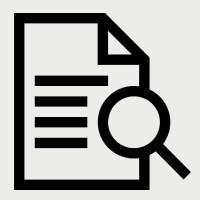Insurers are making strides to capture the huge quantity of data within their businesses, and also the insights that will inform management decisions. They aim to address expensive inefficiencies and dangerous control risks, which are inherent in complex processes that require manual interventions. New compliance requirements, notably IFRS 17 (International Financial Reporting Standard 2017), add to the challenges – yet also provide the impetus for process transformation.
IFRS 17 will cost the insurance industry an estimated US$20bn (Source: Willis Towers Watson, June 2021). However the complexities of IFRS 17 implementation are such that insurers rarely achieve their hoped-for goal of broader Finance modernization.
There are also other challenges that insurers are facing, in addition to IFRS 17. More complex models are required for new risk-based capital regimes. New demands are being made on multinational insurers by all the different regulators they must engage with around the world. Paradoxically, the need for Finance/Actuarial transformation grows with complexity, and yet becomes harder to achieve.
Insurers invest significant amounts in systems from software vendors, but these do not usually provide an end-to-end process. The reality is that core models, digital task scheduling, and subsidiary calculations are often dependent on the world’s most widely used software – namely, Microsoft Excel. When we dig deeper with chief financial officers (CFOs) and chief actuaries into their processes, we find they often require Excel spreadsheets at multiple stages.
Excel is widely used because it is widely useful:
| Excel is great ... | ... in the right context |
|---|---|
| Cost effective | Slow to run large models and data sets |
| Powerful | Hard to test and audit |
| Easy to use | Easy to abuse |
| Easy to visualize | Hard to connect to other systems |
Despite the wide usage, Excel was never designed to be part of an end-to-end production process with connectivity into other systems. So, it becomes the weakest link in the process, requiring manual interventions and with a risk of mistakes.
When we show Coherent Spark to insurers, they think it’s cool to see their own Excel rules and models running in fast code. Then, the “a-ha!” moment is when we show how readily Spark connects to other systems. Not only does Spark automatically turn Excel into code, it also provides an Application Programming Interface (API) containing your required inputs and outputs. These inputs and outputs are easily accessed by other digital tools to create a connected system.; in effect, to automate your end-to-end process.
Coherent Spark delivers logic to other users and other systems for finance, risk and actuarial teams
Author
- Turn any Excel file into an API in seconds
Control
- Effective data management
- Integrated security and audit model
Test
- Automated API documentation
- Full testing suite
Deploy
- Flexible deployment options: SaaS, private cloud, mobile, on-prem
- Integrated with policy administration and other systems
Analyze
- Compare versions of models to assess proposed changes
- Review logs of all API calls
Automating processes provides the ability to change assumptions and run “what-if” scenarios at will. An Asia-based regional P&C insurer used Spark to automate its reserving report. This insurer could only run the report once a month due to the manual parts of the process. Now this insurer can investigate the impact of assumption changes and other “what-if” scenarios at will; a compliance tool has become a management tool.
Spark use cases include reserving, valuation, capital models, and IFRS 17. Indeed, the application can be to any business process that includes Excel spreadsheets. Spark is proven to satisfy the IT and data security requirements of major financial services firms.
Actuaries who use Spark can build a library of models across use cases, time periods, and markets. Spark provides separation and storage of assumptions, data, and models. All your models can be stored in one place (in Spark) for comparison and auditability, as your models are developed over time. Actuaries have all the flexibility they need, with sound model governance.
Coherent Spark provides separation of assumptions, data and models

Coherent Spark is your library of models to retain, develop, audit and compare as required in future

Retain for comparison wiith other models

Retain for
easy auditability
- Up to 1,000x faster run times for complex models, stochastic processes, and large data sets
- Maintain rules, assumptions, and data separately and connect them all up via Spark—this modular model architecture provides control and audibility
- Control of who may run your process, and who may revise it
- Analytics detailing all users of the model or process
- Comprehensive testing at a fraction of the time and cost when compared to testing systems built by software engineers for actuaries and finance teams
- Ready connectivity to data sources, dashboards, and other actuarial/finance systems
Bob Charles
Head of Actuarial, Coherent
Bob Charles is an actuary who enjoyed a 30-year career with Willis Towers Watson, culminating in leading the Asia Pacific business. He subsequently worked with insurance technology start-ups. Bob is currently the Head of Actuarial at Coherent, working with clients on finding great uses-cases and applications for our unique Spark technology.
-
This author does not have any more posts.





